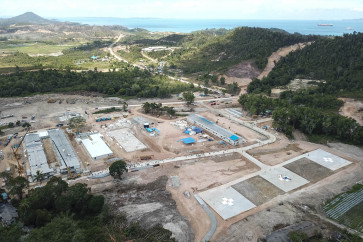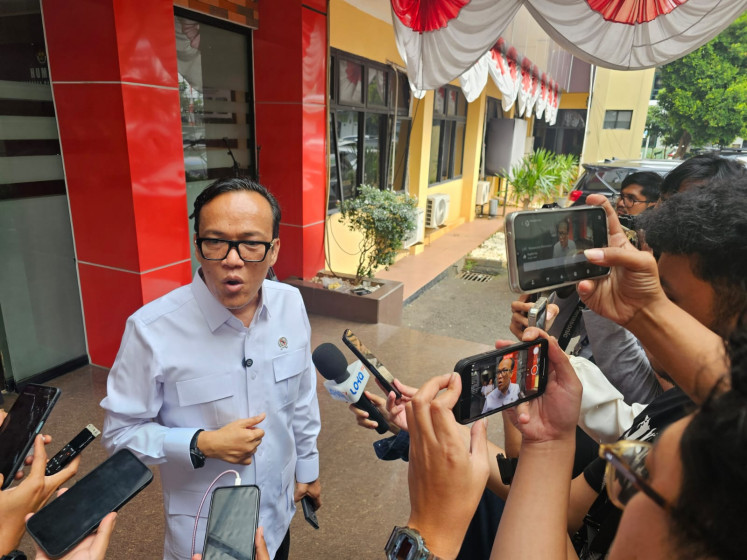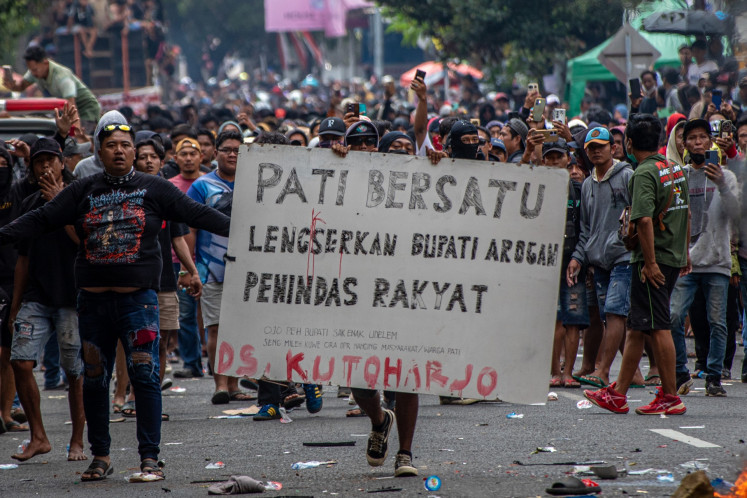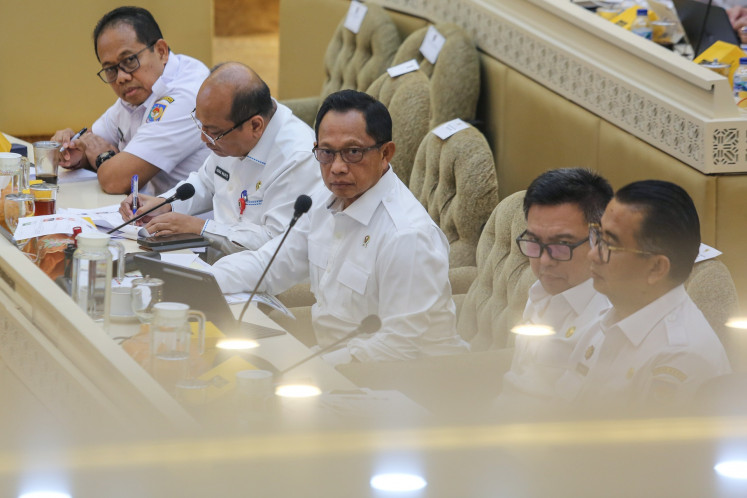Popular Reads
Top Results
Can't find what you're looking for?
View all search resultsPopular Reads
Top Results
Can't find what you're looking for?
View all search resultsHistory and production of ‘moke’ in NTT
Traditional style: Two young men, dressed in the traditional attire of the Lamaholot ethnicity of Lewolema village in East Flores regency pour moke onto a cup made of peeled coconut shell
Change text size
Gift Premium Articles
to Anyone
T
raditional style: Two young men, dressed in the traditional attire of the Lamaholot ethnicity of Lewolema village in East Flores regency pour moke onto a cup made of peeled coconut shell.(JP/Hengky Ola Sura)
Moke, a liquor also called sopi or tua menu in some parts of East Nusa Tenggara (NTT), is actually also found in various ethnic groups in Indonesia, which certainly has different names.
The only reference to the time when people first consumed moke is Negarakertagama, a manuscript written by Mpu Prapanca in the period of Majapahit Kingdom in the 14th century, relating to how the king served his guests with arrack (moke) during royal functions.
Based on a policy brief compiled by Dominggus Elcid Li and peers from the Institute of Resource Governance and Social Change (IRGSC) in Kupang, the moke or sopi industry of NTT is the production of this organic drink that has been traditionally made over the last 300 years in the region.
In Maumere, the capital of Sikka regency, moke is a required drink for parties or mourning. For the people of Flores, NTT, moke has cultural, economic and social values. According to Moat Frans, a farmer from Manubura village, Nelle district, moke is distilled from the sap of fruits and flowers of lontar (palmyra palm), enau (sugar palm) and also coconut trees, which is collected in earthen containers.
Moke sap or nira is tapped from palm trees by cutting the tips of their fruit buds and tying them up, allowing the fluid to flow into containers called nawing. Usually, one tree is tapped twice daily, in the morning and afternoon. Long bamboo stems with slight cuts to step on are fastened to the trees for easier climbing up and down.
The newly tapped palm sap is kept for one night before being boiled the next day. If this sap is not processed into moke, it can be sold for its good taste. If stored for several days, it will be akin to vinegar. After a night, the sap is put into an earthen jug for boiling. The jug is tightly closed, and its top is linked with a 50-centimeter bamboo stem.
This bamboo is further connected with another bamboo stem about 7 meters long, which is horizontally slanted. When the sap in the jug is boiling, its vapor rizes and moves down to the horizontal bamboo for condensation. At the tip of this bamboo, a kumba (jerry-can) is ready to contain drops of liquid from the condensation.
This is the first stage of arrack making. After three jerry-cans of the liquid are collected, the second boiling stage will follow to reduce the liquid in the three cans to only one can. The product is called number-one moke, also dubbed flammable moke by the people of Flores as it can be set aflame by a lighter due to its alcohol content of 40 to 50 percent.
The IRGSC policy brief released in January 2013 indicates that the building of NTT’s modern sopi or moke agro industry involves not only the people’s economy but fundamentally also the palmyra palm’s ecology and sustainability. The development of a modern sopi production system also has a technological dimension and is thus closely related to the principle of equity as industrialization needs considerable start-up costs and is prone to be controlled by large investors.
Therefore, it requires regulation that favors marginal sopi producers of NTT such as Rote, Timor, Kisar, Sikka, Manggarai, Sumba and Alor. Sopi or moke or tua menu is the local name of the typical drink already produced through many generations by the communities in numerous islands of NTT as well as Maluku.
As shown by the IRGSC, the drink that has many ethnic names is an attribute inseparable from traditional ceremonies. Apart from its important role in the observance of local customs, it’s economically undeniable that the traditional organic arrack indeed becomes a source of income for families maintaining their distillation practice.
Long before NTT Governor Viktro Laiskodat launched the Sophia moke brand, in Watu Gong village, East Alok district, a farmer had already initiated a small-and medium-scale moke distillery business named Industri Kecil Menengah (IKM) Lontar. IKM Lontar later became part of the village-owned enterprises undertaken by Stefanus and his team.
Through this IKM, Stefanus has been improving the quality of moke products, from their packaging to the aroma. He has also introduced IKM Lontar’s tagline, “Legend of Maumere”, for a good reason.
“Moke is a means of unity. When problems arise in communities, they always use moke to reunite themselves. Moke is also a traditional drink consumed on various occasions,” he said.
Stefanus told The Jakarta Post that it was now his task as a successor to raise the status of moke from a traditional drink to one with economic value. He acknowledged that the effort to uplift moke’s status to become a product with a legal basis had always faced regulatory constraints.
“We tried in 2017, but the government again failed to issue a regulation. This is actually meant to protect all farmers producing moke in Sikka regency. But we must never stop, we have to keep innovating,” added Stefanus.
He deems it necessary to offer a unique gift from Maumere, like other regions have done.
“It’s like Bali with Balinese arrack. The typical drinks in other areas can be legalized, why not in Sikka?” asked Stefanus.










